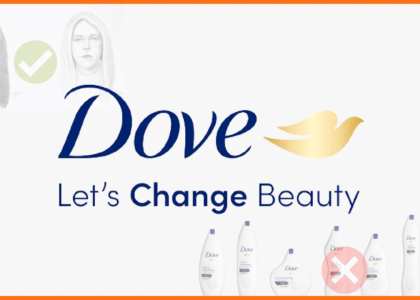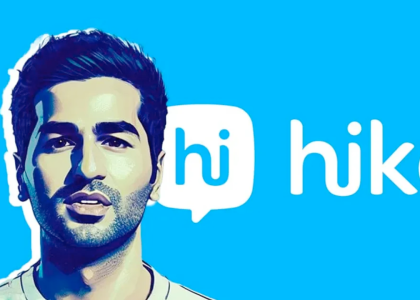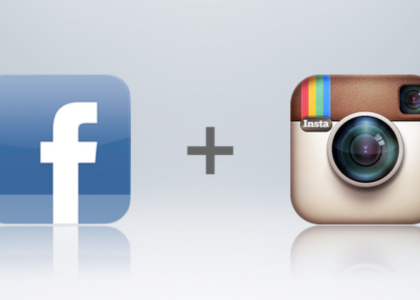Executive Summary
Adobe’s pivot from a perpetual license software model to a cloud-based subscription service — Creative Cloud — is now regarded as a benchmark case in strategic business transformation. What began as a bold risk in 2013 evolved into a multi-billion-dollar SaaS powerhouse and reshaped Adobe’s positioning from a product provider to a platform-first, experience-led ecosystem.
This case study explores the strategic rationale, execution roadmap, organizational impact, customer response, and financial turnaround driven by this shift, making it a masterclass in business model innovation.
Adobe’s Legacy Model and Emerging Challenges
Before the Shift (Pre-2012):
-
Revenue Model: One-time perpetual software license
-
Flagship Products: Photoshop, Illustrator, InDesign, Premiere Pro
-
Upgrade Cycle: Every 18–24 months (paid upgrades)
-
Distribution: CDs or digital downloads, boxed software
Challenges Faced:
-
Revenue Volatility – Peaks during new version launches, troughs in between
-
Piracy – Rampant unauthorized copies, especially in Asia
-
Delayed Innovation – Long release cycles hampered competitive edge
-
User Fatigue – Customers delayed upgrades due to high costs
Adobe’s success had turned into a constraint — it was hard to scale, innovate continuously, or retain customers.
Strategic Trigger for Change
CEO Shantanu Narayen’s Vision:
“We had to kill our old business before someone else did. We chose growth with risk over comfort with decay.”
Key Influencing Trends:
-
Rise of SaaS (Salesforce, Dropbox)
-
Shift to cloud computing & digital workflows
-
Customers wanted access over ownership
-
Subscription models showed lower churn & higher lifetime value (LTV)
The Strategy: Building Creative Cloud
Announced: October 2011
Launched: May 2013
Offering:
-
Access to 20+ Adobe apps (Photoshop, Illustrator, Premiere Pro, etc.)
-
Cloud storage (20GB–1TB)
-
Automatic updates
-
Community support, fonts, templates, and Adobe Stock integration
Pricing:
-
Individual Plan: Starting $9.99/month
-
All Apps Plan: $52.99/month
-
Teams & Enterprise Plans: Tiered pricing
Positioning Shift:
From “Buy & Own Software” → “Subscribe to a Creative Ecosystem”
Implementation Roadmap
|
Phase |
Focus |
Timeline |
|---|---|---|
|
Phase 1 |
Customer Education, Pilot Rollout |
2012–2013 |
|
Phase 2 |
Global Launch, Migration Incentives |
2013–2015 |
|
Phase 3 |
Sunset of Perpetual Licenses |
2015–2017 |
|
Phase 4 |
Ecosystem Expansion: Behance, Adobe Stock, Sensei AI |
2017–2022 |
|
Phase 5 |
Freemium Models, Mobile Strategy, Firefly AI |
2023 onward |
The transformation was phased, data-backed, and relentless.
Customer Segmentation & Targeting
|
Segment |
Messaging |
Offering Tailored |
|---|---|---|
|
Freelancers/Designers |
Affordable monthly access |
$9.99 Photography Plan |
|
Agencies |
Team management, collaboration |
Admin Console, Team Plans |
|
Enterprises |
Security, compliance, integrations |
Enterprise License Agreements |
|
Students |
Price-sensitive |
60% discount plans, Bundles with hardware |
Adobe customized CX at pricing, onboarding, and value levels.
Organizational & Cultural Transformation
Internal Shifts:
-
Retrained entire sales team to sell subscriptions
-
Revamped support for recurring billing & account-based engagement
-
Created Customer Success org to reduce churn
-
Revamped engineering to support continuous deployment
From shipping products → to delivering ongoing value
Ecosystem Integration – Building Stickiness
Add-ons launched alongside Creative Cloud:
-
Adobe Fonts – Royalty-free typefaces
-
Adobe Stock – Paid stock image marketplace
-
Behance – Creative social network
-
Creative Cloud Libraries – Sync assets across apps/devices
-
Adobe Express – Quick content creator for non-designers
These created layered value → more usage → harder to churn.
Financial Impact – The Hockey Stick Curve
|
Metric |
2012 |
2023 |
|---|---|---|
|
Recurring Revenue |
<10% |
>93% |
|
Annual Revenue |
$4.4B |
$19.41B |
|
Gross Margin |
~84% |
~88% |
|
Adobe Stock Revenue |
Nil |
$1B+ |
|
Total Paid Subscribers |
0 |
30M+ (Creative Cloud) |
|
Stock Price |
~$30 |
~$560+ |
Adobe’s total addressable market (TAM) expanded massively — from creative pros to freelancers, marketers, students, and influencers.
Creative Cloud’s CX Flywheel
-
Onboarding – Simplified app installers, tutorials, cloud storage
-
Utility – Regular app updates, AI features (Sensei, Firefly)
-
Community – Behance + Adobe Live sessions
-
Collaboration – Shared libraries, real-time co-editing (XD, Photoshop web)
-
Reward – Personalized tips, credits, bundle offers
Drives loyalty through utility + emotion + identity
Customer Experience Metrics
|
Metric |
Value (2023) |
|---|---|
|
Net Promoter Score (NPS) |
54 (up from 28 in 2013) |
|
Churn Rate |
~1.5% monthly |
|
Average Revenue per User (ARPU) |
$105/year (Freemium users) → $640+/year (All App users) |
|
Time in App per week (avg) |
4.6 hours |
|
Support Ticket Resolution CSAT |
92% |
Strategic Partnerships Boosting Adoption
-
Microsoft – Integration into Teams, OneDrive
-
Apple – Optimized iPad versions for Photoshop, Illustrator
-
Google – Web editing features integrated into Chrome ecosystem
-
Canva & Figma – API-led co-opetition; Adobe also tried to acquire Figma in 2022 (deal later abandoned)
Adobe expanded usage via platform-agnostic partnerships
Adobe Firefly – The Generative AI Evolution
Launched:
2023
-
GenAI tools for creatives
-
Text-to-image, text effects, template design
-
Integrated into Photoshop, Express, Illustrator
-
Adobe trained Firefly on licensed, safe-to-use content (copyright-safe)
Positioned Adobe as ethical + scalable + professional GenAI leader in creativity
Competitive Landscape: Then vs. Now
|
Competitor |
Strengths |
Adobe Differentiator |
|---|---|---|
|
Canva |
Ease of use, Freemium |
Pro-grade precision, GenAI, Brand assets |
|
Figma |
UX/UI collaboration |
Broader ecosystem, Creative Pro features |
|
Affinity Suite |
One-time cost |
Integration + AI + cloud sync |
|
CorelDRAW |
Price |
Innovation, ecosystem, market dominance |
Adobe defends premium pricing through superior UX, trust, breadth, and community.
Risks Navigated During Transformation
|
Risk |
Mitigation |
|---|---|
|
Customer backlash |
Educational pricing, legacy app access during migration |
|
Revenue dip |
Informed Wall Street, showed CLTV impact |
|
Infrastructure scale |
Invested in Adobe Cloud & AWS support |
|
Internal resistance |
Change champions, incentive restructuring |
|
Churn during early phases |
Introduced Adobe Creative Residency, loyalty coupons |
Lessons for Other Enterprises
|
Strategic Principle |
Adobe Execution |
|---|---|
|
Kill your legacy model |
Sunset perpetual licensing |
|
Build platforms, not products |
Launched CC ecosystem (apps + stock + cloud) |
|
Align org structure with model |
Sales, engineering, marketing retooled |
|
Treat CX as ongoing |
Tutorials, community, personalized nudges |
|
Don’t fear short-term dips |
Revenue dipped 2013–2015, but rebounded stronger |
Recognition & Impact
-
Forbes World’s Most Innovative Companies
-
Fast Company Top Design-Centric Firms
-
2022 Fortune “Future 50” Companies
-
Multiple industry CX awards (Gartner, Forrester)
-
Adobe MAX: Global creativity conference with 5M+ virtual attendees
The Freemium Flywheel
-
Adobe Express, Acrobat Web, Photoshop Web offered free with limited access
-
Users upsold into Creative Cloud once engaged
-
School & college bundle deals – build early affinity
Gen Z now sees Adobe as part of their creative identity
What’s Next? Adobe’s Forward Strategy
-
Mobile-First Creation – Bring full Creative Suite to mobile
-
AI Democratization – Firefly for SMBs and social creators
-
Global Tiering – Emerging markets, language-based support
-
Deeper B2B Expansion – Creative Cloud for Teams + Experience Cloud bundles
-
Creator Economy Focus – Monetization tools inside apps
Conclusion
Adobe’s transition to SaaS was not just a pricing change — it was a fundamental reimagination of how creative work is enabled, delivered, and monetized. With Creative Cloud, Adobe pioneered a recurring revenue model, powered by constant innovation and user-centricity.
The journey reveals that bold strategy, strong execution, and a relentless focus on CX can turn a vulnerable incumbent into a next-generation category leader.
Sources
-
Adobe Investor Relations (https://investor.adobe.com)
-
Adobe MAX Keynotes (2013–2024)
-
Bloomberg, TechCrunch, The Verge
-
McKinsey & Co. SaaS Benchmarks
-
Gartner Magic Quadrant for Content Creation
-
YouGov Brand Scores 2023
-
Wall Street Journal Adobe Financials Tracker






